Famous sports personalities of Bihar
Saurabh Tiwary
Saurabh Sunil Tiwary, who models himself on India’s Captain Cool MS Dhoni, is a Bihari by birth and was brought up in Jamshedpur. The left handed middle order batsman started taking cricket seriously at the age of 11. After making his debut for Jharkhand at the age of 14, Tiwary continued to impress the local selectors and eventually made his Ranji Trophy debut in 2006-07.
Having scored two key half centuries in India’s U-19 series win against South Africa and Bangladesh, Tiwary walked in to the U-19 World Cup in Malaysia in 2008. Known for his consistency, Saurabh Tiwary played a handy role in the middle order on more occasions than one. He scored 3 centuries in the 2009-10 Ranji season, which was the start of his purple patch.
In 2010, Saurabh Tiwary made a name for himself by playing a vital role in helping Mumbai Indians reach the final of the tournament. Scoring 419 runs in 16 games at an average of over 29, Saurabh Tiwary was named the U-23 Player of the Tournament.
Saurabh Tiwary made his International debut against Australia in Vizag after a few senior players opted out. In the auctions that preceded the 2011 IPL, he was bought by the Royal Challengers Bangalore. He had a pretty ordinary tournament. He continued to play for them in the next two seasons but lack of performances forced the franchise to throw him into the auction pool for the 2014 edition where he was bought by the Delhi Daredevils.
The left-hander is a regular at the domestic circuit and continues to play all three formats for his state Jharkhand.
Saba Karim
Syed Saba Karim was a surprise choice for the tour of West Indies in 1989 but being the reserve wicketkeeper, never got to play a single international game. He was forgotten for some time but came back into the Indian side during the 1996 tour of South Africa. He made his debut in that serie
s at Bloemfontein and scored a useful 55, which incidentally remains his best till date. Thereafter he never really got a chance to cement his place in the side, mainly due to the presence of Nayan Mongia. Even after Mongia’s dismal 1999 World Cup campaign, Karim could not find a place in the squad as the selectors preferred MSK Prasad and Sameer Dighe. But with the two failing to capitalise on their chances, Karim who is also a useful late order batsman, got his due during the South African tour of India in 2000. Just when he seemed set to consolidate his position in the team, he received an untimely setback when he was injured on his right eye while keeping to Anil Kumble during the Asia Cup at Dhaka. He had to undergo surgery and the injury ended his playing career.
Karim started his domestic career in 1982-83, representing Bihar in the Ranji Trophy. A profilic run getter in the domestic arena, he recorded a career best of 234 against Orissa in the 1990-91 Ranji Trophy season. He was a mainstay with the Bihar side till 1994-95 when he switched to Bengal in an effort to catch the selectors attention. This proved to be a worthwhile move since he got a second chance to represent the country thanks to some good performances behind the stumps and before them.
He took to television commentary after his playing days, and was named national selector in September 2012.
Kirti Azad
The son of a Central Minister, Kirti Azad was an aggressive right-hand batsman and a quic
kish off spinner. A surprise choice for the tour of Australia and New Zealand in 1980-81, he made his Test debut at Wellington. He then played three Tests without much success against England in 1981-82 and was then ignored till he was picked for the World Cup in 1983. Azad had his day in the sun when he played a leading part in India winning the semi-final against England, when he helped bottle up the middle order with his fastish offbreaks and earned a bonus while bowling the dangerous Ian Botham. Back home he played a swashbuckling innings at the Kotla in helping India defeat Pakistan in one of the early day-night games. But he met with little success in three Tests against Pakistan and West Indies and was discarded.
Azad, a nonconformist in many ways, was a stalwart allrounder for Delhi for years and in 95 Ranji Trophy matches he scored 4867 runs (47.72) and took 162 wickets (28.91). His highest score was 215 against Himachal Pradesh in 1985-86. He followed his father into politics and was elected to Parliament on a BJP ticket.
Subroto Banerjee
One of the earliest products of the MRF Pace foundation, Banerjee was included in the Indian cricket team admist high expectations. He went on the tour of Australia in 1991-92, where it was thought he would succeed given the hard and bouncy tracks Down Under. He played in the
third Test at Sydney as the fourth seamer when India took the field without a specialist spinner. Banerjee bowled only in the first innings picking up three wickets for 47, those of Mark Waugh, Mark Taylor and Geoff Marsh. He then figured in the Benson & Hedges World Series that followed without any conspicuous success. Banerjee was also selected for the tour of South Africa the next season but did not play a single Test and met with only modest success in the one dayers and the first-class games and was a forgotten man after that. The fact that he bowled short and wide and could not bowl long spells were perhaps the reasons for his international career being brief.Banerjee, however, continued to play first-class cricket with some success. His best bowling in the Ranji Trophy was been 7 for 18 (12 for 78 in the match) against Tripura in 1989-90.
Shivnath Singh
In a country where athletics garners a subliminal level of importance, it can be rightfully stated that the hype which surrounds various other sports obscures the great achievements by athletes who toil to reach exemplary levels of excellence and bring glory to India.
One such brave-heart is Shivnath Singh, India’s greatest long distance runner, whose national record in the marathon of 2:12:00 hrs set in 1976 persists to this day, serving as an intimidating mark to overcome.
Equipped with the grit and determination to overcome all obstacles, and to train like to a workhorse, Shivnath Singh was the very personification of endurance. He would run bare-footed with great resolve, never to be seen wilting.
He was born on July 11, 1946, in the village of Manjeria, Buxur (Bihar). Though his family was not financially sound, Shivnath took to running at an early age, which proved to be a boon not just for himself, but also for the country.
Shivnath’s breakthrough performance was at the 1973 Asian Championships in Manila, when he secured the silver medal in both the 5000m and the 10,000m. He finished second to Ichio Sato of Japan in the 5,000, and lost out to teammate Hari Chand in the 10,000m. But in the 1974 Asian Games in Tehran he went one step further, winning his first and only major gold medal in the 5000m. That year, he was also adjudged as the best sportsman in the country, and was awarded the Arjuna award.
In the 1975 Asian Championships, in Seoul, his 1973 fate was replicated, as he secured the silver medal in both the 5000m and the 10,000m, losing out to the same competitors.
The rivalry between Hari Chand and Shivnath Sigh was somewhat similar to that of Steve Ovett and Sebastian Coe. They fought tooth and nail for the gold on every occasion, be it the National Championships, cross-county races, or other road races in North India. Eventually, Shivnath decided to switch to marathon, and it is in that event that he baffled everyone at the 1976 Montreal Olympics, with a time of 2:15:58.
Although Shivnath lead the competition for 32 kilometres – almost three fourths of the race – alongside American Bill Rodgers (a Boston marathon winner) and Finn Lasse Viren (winner of four Olympic gold medals in the 5000m and 10,000m), he gradually drifted behind, and managed to finish 11th in the marathon which comprised of 72 competitors.
In 1978, at Jalandhar, Shivnath’s legendary run of 2:12:00 found its way into the record books, and still stands as the Indian high mark. The Edmonton Commonwealth Games in 1978, the Bangkok Asian Games in 1978, the Moscow Olympics in 1980, and the Delhi Asian Games in 1982 were some of the other major international competitions he took part in.
His retirement was a silent affair, and he joined Tata Steel after resigning from the Army. On June 6, 2003, he passed away due to a suspected hepatitis-B infection, which had been the cause of his persistent illness.
Zafar Iqbal
Zafar Iqbal (born 20 June 1956) is a former Indian field hockey player and captained the national team. Mr. Zafar Iqbal has made invaluable contribution to the Indian Hockey Team since he first donned the national colours against Holland in 1977, which the team went on to win. He played at the Asian Games, Bangkok in 1978 and was the Captain of the team at New Delhi in 1982, winning the silver medal in both. The crowning glory of his illustrious career in hockey came to him in 1980 when he represented India at the Moscow Olympics and brought home the Gold Medal after a long hiatus. Further, he had the honour of carrying the Indian Tricolour off the Indian Squad at the Opening Ceremony of the Los Angeles Olympics 1984. He also won the bronze medal for the country at the Champion’s Trophy 1982 in Holland and won many other tournaments against Pakistan, Malaysia, Australia, New Zealand, West Germany and other European nations.
Rashmi Kumari
Rashmi Kumari is an International Carrom Champion from Bihar, India, playing since 1992. She is employed on a scholarship basis at UBI,Patna. She also played for BSB in many tournaments.
Rajesh Chauhan
Rajesh Chauhan will be remembered for two things in Indian cricket. His final over six off Saqlain Mushtaq during the 2nd ODI at Karachi in 1997 was his highest point. His lowest point though came in the same year. In the Test against Sri Lanka at the SSC in 1997, Sri Lanka notched up a world record score of 952/6 declared. In that, Rajesh Chauhan’s bowling figures read 78-8-276-1, which was the second worst bowling figures ever in Test history. These roller coaster instances summed up the career of Chauhan.
Chauhan was the star performer for Madhya Pradesh in the domestic circuit. Along with skipper Chandrakant Pandit, the Madhya Pradesh team put in some credible performances during the period of the mid-90s. His performances led to his selection during the home series against England. Thus, Indian cricket was blessed with the new spin trio of Anil Kumble, Venkatapathy Raju and Rajesh Chauhan. During the 1994 tour to New Zealand, he was
He was consistently overlooked as the decade progressed and he played his last series against Australia at home. During his 21 Test playing period, India won 12 matches and drew nine. Following his retirement, Chauhan settled in Bhilai, Chhatisgarh and worked as a PRO in Bhilai Steel Plant. In 2007, Chauhan escaped with his life when he was involved in a car accident in which he sustained fractures and bruises on his arm, leg and back.
Kavita Roy
Kavita Roy (born April 10, 1980 in Hajipur, Bihar) is a former One Day International cricketer who represented India. She played one One Day International. She is a right-hand batsman and bowls right-arm medium pace.
MS Dhoni
Mahendra Singh Dhoni’s arrival in Indian cricket and his subsequent rise has been a story of unprecedented success, punctuated by the occasional blip. Of all the players of the present generation, it is Dhoni who symbolizes the new India well. Aggressive without being brash, successful without being arrogant, and seemingly possessing a Midas touch, Dhoni is the perfect blend of a role-model and pin-up star.
Dhoni announced himself on the international stage with an array of almost agricultural shots and a bat that he wielded like an axe. In his fifth match, he smashed 148 off a Pakistan attack that didn’t know what had hit them. Six months later, he went one better, to score a brutal 183 not out against Sri Lanka in an innings that made Virender Sehwag look snail-like. That innings also saw him break Adam Gilchrist’s record for the highest score by a wicketkeeper in a One Day International.
Dhoni’s arrival ended India’s long search for a wicket-keeper who could also bat, and he now has the most number of dismissals in ODIs and Tests by an Indian keeper.
His growing stature and cool-headedness led to his appointment as India’s captain for the inaugural T20 WC, where Dhoni’s calm leadership steered India to victory. He then became the ODI captain after Rahul Dravid relinquished the post, and eventually, ascended to the full-time Test captaincy once Anil Kumble retired.
Leadership saw him change his batting style, as he made a shift from being explosive to being more reliable. With an ODI average that has crossed 50, and a strike-rate that remains in the high 80s, the shift has worked for Dhoni.
As a leader, his hallmarks have been his ability to not duck behind excuses and his ability to maintain his cool under situations of extreme pressure. Dhoni’s biggest triumph was winning the World Cup in 2011, which India won after 28 years owing to his exemplary batting display in the final and calm and methodical leadership. Post World Cup, when the Indian team struggled to perform to the levels they did in the previous two years, Dhoni became a lone warrior for the ODI team on many occasions. In that period, he became the first captain in ODI history to record a century batting at No.7 in 2012, against Pakistan at Chennai when he scored a stunning 113 walking into the crease when India were 29 for 5.
Although his fierce captaincy helped India achieve success and grab the top spot in Test cricket, eight back-to-back Test losses against England and Australia overseas put his image as a Test batsman and captain in question. To add fuel to fire, the 1-2 drubbing India received at home from England in the Test series in 2012 earned him criticism from many former players.
In the Border-Gavaskar series in 2013, Dhoni became the first Indian wicket-keeper to hit a double hundred in Tests when he smashed 224 in the first Test at Chennai – the best knock of his career so far. His fluent innings gave India a much-needed victory in the first Test of the series, earning him the respect he had lost during the lean patch the previous year. He also became the first Indian wicket-keeper to complete 4,000 runs in Test cricket. After a convincing win in the second Test match, he crossed Sourav Ganguly’s record of 21 Test wins and became the most successful Test captain for India. Under his captaincy, India became the first team in more than 40 years to whitewash Australia in a Test series.
As a captain, Dhoni had a fine run in 2013. In the month of June, Dhoni helped India to win their second Champions Trophy title. He also became the first captain in the history to win all three ICC global events. He led India to victory in the 2007 T20 WC, 2011 ICC World Cup title and ICC Champions Trophy in 2013.
India then won the ODI series against Australia and whitewashed West Indies in Tests in November 2013. In the third ODI against Australia in October 2013, Dhoni became the fastest Indian captain to complete 5,000 runs in ODIs after Mohammad Azharuddin (5,239) and Sourav Ganguly (5,082). The following month, in the second ODI against West Indies at Vizag, Dhoni became the first wicketkeeper-batsman in history to captain his country in 150 One Day Internationals. He is also the second Indian after Mohammad Azharuddin to captain India in 150 matches. Azharuddin holds the Indian record with 174 games as the leader of the side.
He led the side to the finals of the 2014 World T20 in Bangladesh, in which India lost to Sri Lanka. Dhoni also is the captain of Chennai franchise, one of the most successful teams in the history of Indian Premier League, which won back-to-back titles in the years 2010 and 2011 and also the Champions League T20 in the years 2010 and 2014.
While Dhoni’s keeping record was very good, his Test captaincy came under severe criticism, especially after India’s continuous losses overseas. One of India’s modern day legends, moments after helping India draw the Melbourne Test
in 2014, he announced his retirement from Test cricket. He cited excess workload as the reason for quitting the longest format of the game. However, Dhoni stressed that he would continue to play ODIs and T20Is.Dhoni successfully led India to the 2015 World Cup semifinal, where they lost against Australia, effectively ending India’s 11 match winning streak in World Cups. During the course of the tournament, he also became the first Indian captain and third overall to win 100 ODI matches.
On 4th Jan, 2017 Dhoni stepped down as the captain of the Indian ODI and T20I team. Having led the team across all formats of the game for more than seven years, it was only apt that Dhoni, who is now entering the final stretch of his career, enjoy his playing days, without the additional pressure of captaincy. With Virat Kohli taking over the reigns in all the three formats of the game, Dhoni, who was gears once known for his swashbuckling knocks, has converted himself into a reliable middle-order batsman. His presence gives a lot of solidity to India’s inexperienced middle-order and his ability to change gears has resulted in India either posting several big scores or chase down any score.
BPCS Notes brings Prelims and Mains programs for BPCS Prelims and BPCS Mains Exam preparation. Various Programs initiated by BPCS Notes are as follows:-
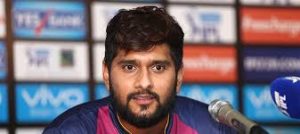
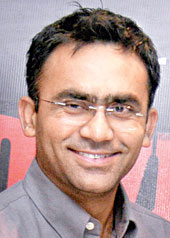
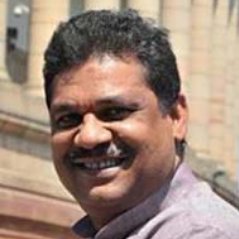
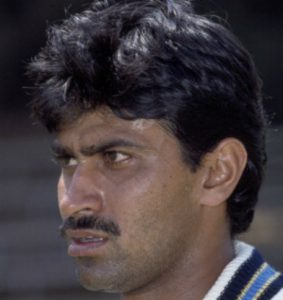
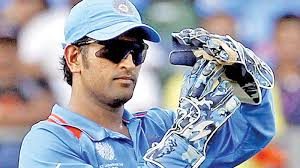
Comments are closed.